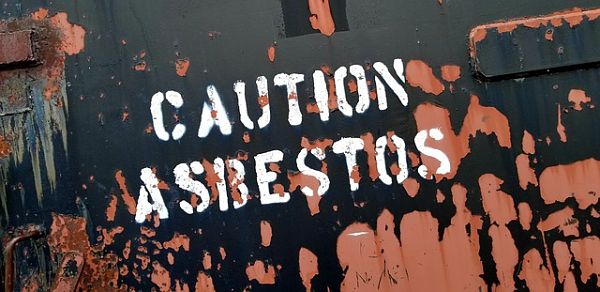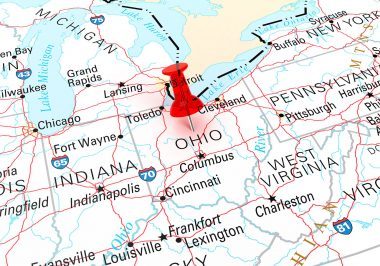Common issues when renovating an older home
Top blog articles
Older homes have history and good bones, but that doesn’t mean they are easy to improve or update. Starting a renovation, or any improvement project on an older home can lead to a lot of problems and issues.
Often people who start these projects are surprised by these issues, even though many homeowners are faced with the same problems. Knowing what these potential problems are and how to approach them can alleviate a lot of headaches and streamline the renovation process.
An important but often overlooked aspect of a renovation is updating the necessary insurance coverage. The updates and renovations made to the home can and will change the coverage options and costs, and keeping the insurance company in the dark can lead to big issues down the road.
The age of a home also affects insurance coverage. The problems associated with older homes are factored into potential insurance coverage. Understanding these problems and old home insurance can set you, and your home, up for success and many happy years.
Common renovation problems

With a home of a significant age, you can almost guarantee there will be costly issues and necessary updates. In fact, many older homes have the same issues or possible concerns.
Before starting a major home renovation, it’s a good idea to research these common problems. These few moments of research can soften the blow of uncovering these problems and give you a head start on fixing the issues.
Plumbing
One of the most common issues in old home renovations is the plumbing. Modern code and building practices call for copper or plastic pipes to be used when plumbing a house. These materials are more cost-effective, long-lasting, and associated with fewer long-term problems.
Older homes, however, were not built with these materials. The biggest issue is with homes built before 1960. Before this time period, homes were built with galvanized pipes. These pipes are notorious for clogging, corroding, and collapsing.
Galvanized pipes can cause major problems just in the everyday functionality of a home, but are always flagged during the renovation process. Contractors and inspectors will see these pipes and require the homeowner to replace any galvanized pipes throughout the house, not just the areas that are being remodeled.
These kinds of issues can make it difficult to make major changes, like relocating a toilet or adding a new shower. The cost to replace and update outdated plumbing fixtures can eat into other areas of a renovation budget, but they must be corrected.
Read more: Old house plumbing
Electrical wiring

Another common issue in older home renovation is the electrical wiring. Like the outdated plumbing in homes built before 1960, the materials used to wire a home for electricity are known to malfunction and break down.
Most older homes are wired with knob-and-tube wiring. The biggest issue with this style of wiring is safety. Knob-and-tube wiring is not grounded. This means stray voltage in the wiring builds up inside the system rather than being directed to the ground and released safely. Stray voltage in a system results in potential fire hazards.
These older electrical materials are also very brittle. Over time, they break down and fall apart, leaving live wires exposed. Again, this presents a potential fire hazard.
Electricity is another big expense in a home renovation, but it is a safety issue and must be dealt with by professionals. Many times, an electrical issue isn’t in just one area of a home and will need to be remedied throughout the house.
Instantly estimate the cost of your remodel...
...or take your time to personalize dozens of choices to transform your house into your dream home.


Dry rot and mold
Because the wood and building materials used in older homes have been around for so long, there is the potential for dry rot or mold. Older homes have a history of water damage or leaky roofs. This translates to major damage.
Wood that gets wet is susceptible to a fungus called dry rot. Wood that is infected with dry rot will become soft and begin to crumble away. This leads to structural damage and, sometimes, costly repairs. Even if the original leak has been repaired, dry rot can continue to spread and wreak havoc.
Mold is very similar. Mold grows best in damp, humid places. These kinds of conditions are often found after leaks are present. Mold issues can be revealed as a renovation progresses and should be dealt with immediately.
Foundation issues
Old homes are also known for foundation problems. Older building techniques did not take into consideration grading or potential water issues. This means that homes were constructed and water was allowed to wash back onto the foundation.
Water running along a foundation continuously erodes the foundational structure of a home and causes major problems for years to come. Foundation problems lead to cracks in walls and floors, and windows or doors that stick or squeak.
Foundation issues should be dealt with early on in the renovation process so that the other updates are protected. If major updates are made but a crumbling foundation is left alone, then the updates will need to be redone or stripped away to repair the foundation later on.
Read more: Foundation repair financing options
Asbestos

If the home being renovated was originally built 40 years ago, then asbestos is a real concern. Asbestos is a fire-resistant material that was used in many areas of construction decades ago. It’s most often found in HVAC systems, flooring, tile, ductwork, and roofing.
Asbestos is not harmful on its own. The issues come when it is disturbed or ripped out as part of a renovation. The particles that are released by this process can cause serious health issues in those who breathe it in or work with it without protective material.
If your home is 40 years old or more, then it’s a good idea to get an asbestos test before starting any renovations. This protects you, your family, and anyone working on your home, but also allows you to be in control of your renovation budget.
Knowing if and where asbestos may be located will help you get ahead of the issue and get it abated professionally before getting too far into the renovation.
Lead paint
Lead paint is a lot like asbestos. This kind of paint was used in early construction before 1978. Lead, as we know it today, is a dangerous chemical that can cause serious health problems for people and household pets.
Just like asbestos, lead paint isn’t dangerous until it’s disturbed. It’s important to get areas of your home tested before starting a renovation. This will keep everyone safe and a renovation on track and on budget.
Read more: How to refresh an older home
Renovating your insurance
After the renovation process is complete, you’ll want to make sure the upgrades are protected. It’ll be time to upgrade your insurance. Unfortunately, even with modern updates and conveniences, your old home will still be an old home. This means insurance coverage will be more expensive and a little tougher to find.
As you look into your insurance coverage, you’ll need to evaluate the value of your home, including special, characteristic features. These kinds of features add to the value of your home and will need to be discussed when looking for a home insurance policy.
Remember insuring an older home will be more expensive than a new build or more modern home. Looking for a cheaper policy isn’t always the best way to go. These cheaper policies can leave big gaps in coverage and result in major financial burdens if issues arise.
Older homes and the renovation process may seem overwhelming or even burdensome. The truth is, however, that these homes are worth the price and fight. These homes are pieces of history with vibrant stories worth saving.










Your opinion matters, leave a comment
Comments
my father always advised in real estate, when you buy an old house, see if the land is worth more than the property